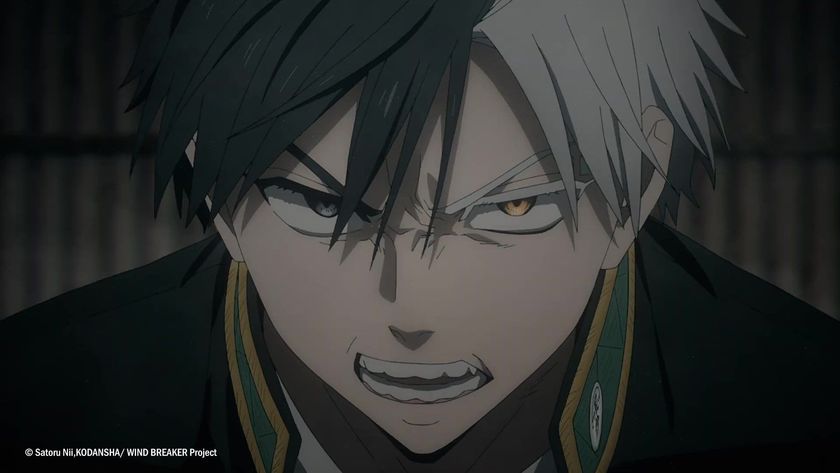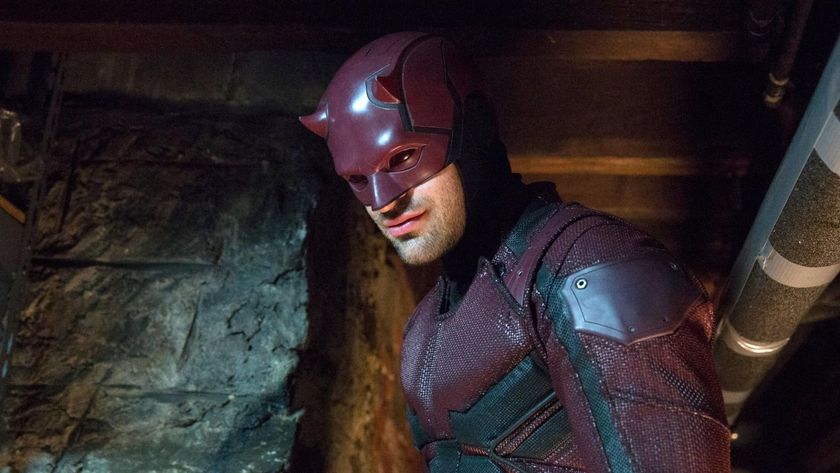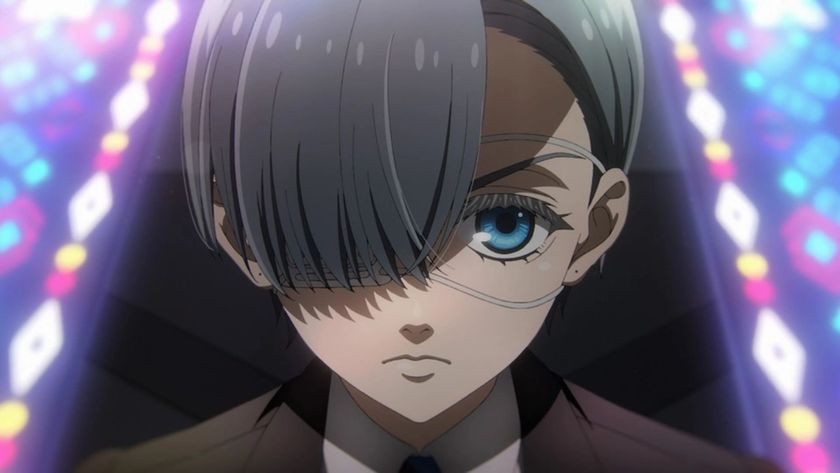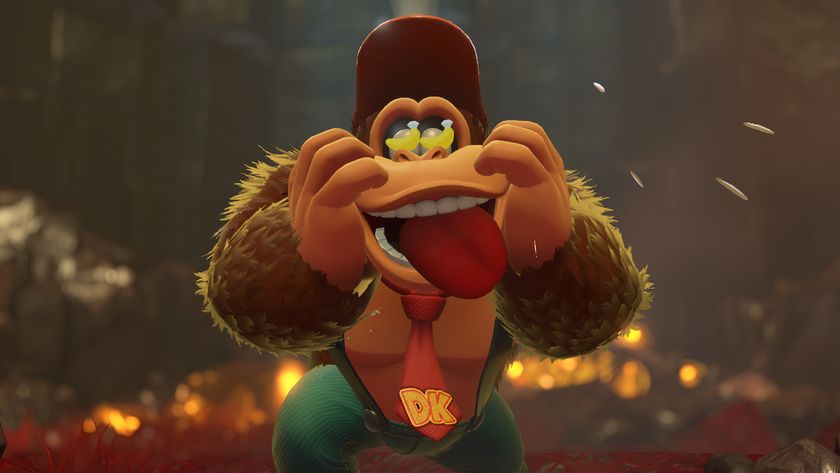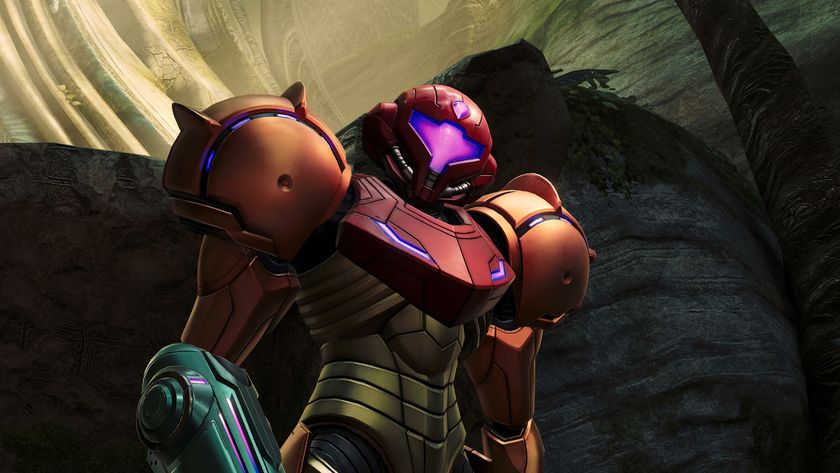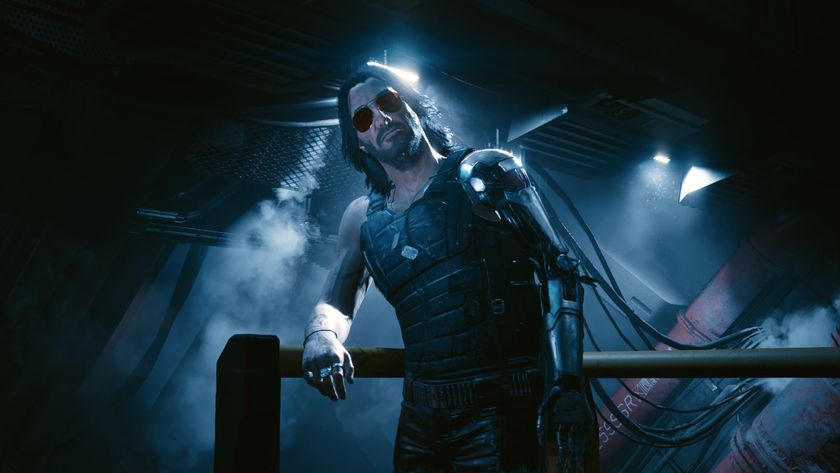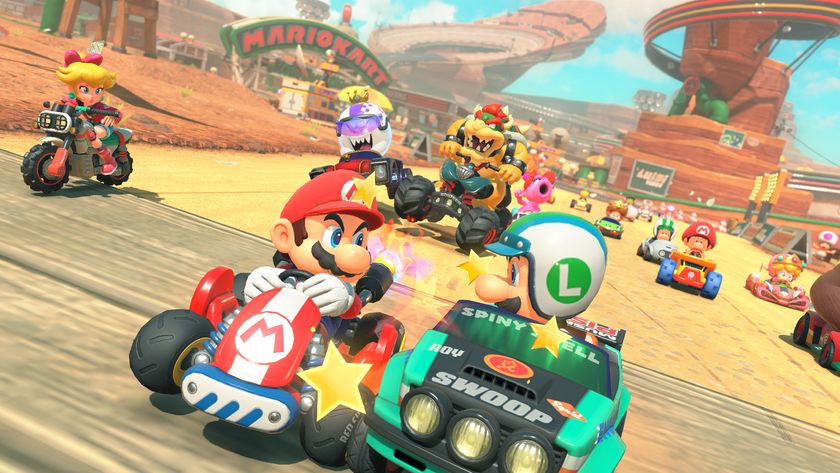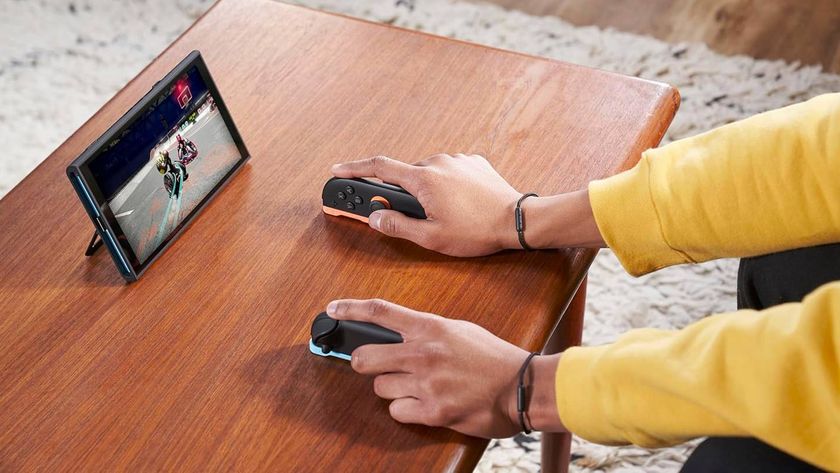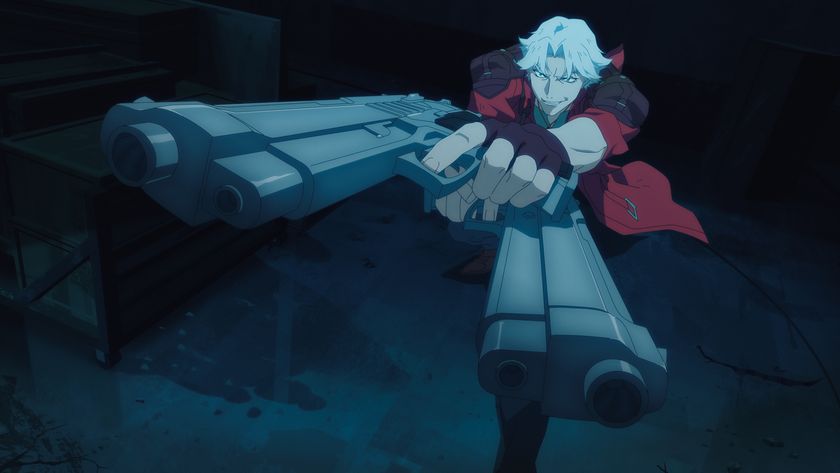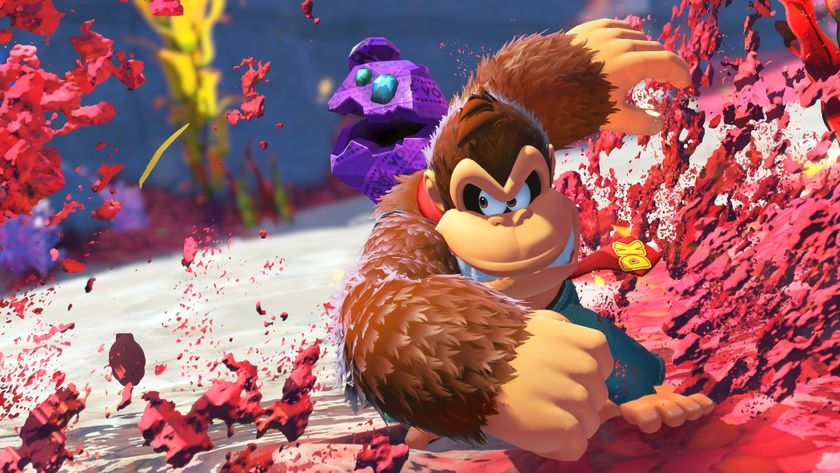Interview: The Special FX of Looper
Looper may have been a low budget film but it still had big ambitions when it came to the effects, despite an initially suspicious director
http://www.youtube.com/watch?v=tFP1-f5IoOY
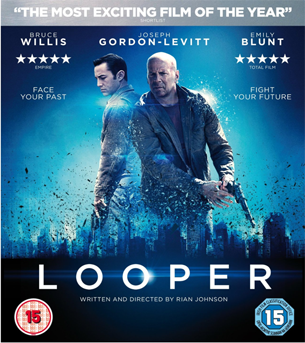
The universally-acclaimed and brilliantly inventive time travel movie Looper , starring Bruce Willis and Joseph Gordon-Levitt as the same man (one of them has to assassinate the other) is out on DVD and Blu-ray on Monday 28 January. SFX managed to grab a chat with the film’s visual effects supervisor, Karen Goluekas, who has a long list of big budget movies to her name ( The Day After Tomorrow , Spider-Man , Green Lantern ) but for whom this low budget project turned out to be a whole new exciting experience for her.
These days when we go and see a science-fiction film and the credits come up, you see of like a million names for special effect. You’re credited on Looper as “Visual Effects Supervisor” but what exactly does that mean? Are you in charge of everybody else in the list?
“Yeah that’s the reason I get the main title credit. It’s funny actually; you’re picking up on an actual bone of contention amongst special effects supervisors that are on the production side of a film as opposed to the guys working on the facility side. Because if you think about it, you only ever have one production designer credited and then a few of art directors, so there’s no question about who was in control. But with visual effects the facility supervisors for each facility also take a ‘Visual Effects Supervisor’ credit, so it gets really confusing. You can have, say, on The Day After Tomorrow 13 of us, and I’d go to some interview and they’d go, ‘Yeah, well how do we know you were in charge?’ and it’s like. ‘Cos I had the main title credit’ – but then loads of other people had the same credit. It’s funny – that’s why some supervisors started to use ‘Visual Effects Designer’ to kinda separate ’em, but then some of the facility supervisors started calling themselves ‘Visual Effects Designers’ as well. So, there you go.”
But you are in the overall driving seat?
“Yeah, yeah, I hired all those other facilities, and I contacted them daily and gave them direction.”
Now Looper is a fascinating film FX wise, because while there are some things that are obviously FX – the flying bikes and the bloke exploding – I get the feeling that the film is probably full of lot of “invisible effects” that we don’t even notice.
Sign up to the SFX Newsletter
Get sneak previews, exclusive competitions and details of special events each month!
“ Yeah I mean definitely all the city stuff. I mean we shot in New Orleans so we grunged up New Orleans. We added lots of buildings, destroyed buildings all in the background, and then you know, added all the signs. Of course for Shanghai we totally futurised that . There were about 400 shots, all told.
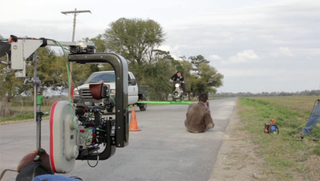
And how does that compare with, say, Spider-Man which you worked on in the past?
“It’s funny. Back when I did Godzilla it was 400 shots and that was like considered a huge show. These days you can have 1,500 shots, that’s probably something more like what Green Lantern had. I don’t remember what Spider-Man had – maybe seven or eight hundred? You know so it’s deceiving. I mean even The Day After Tomorrow only had about 400. It felt like a lot more because they were all big shots.
“I’d say with Looper , probably about 100 of the shots were simple comps, and then the rest of them was stuff I really had to hire A-list vendors to achieve. I think for me, that’s the biggest key – even if it’s low budget you still need A-lister vendors to do it. Because Ryan Johnson came into this not a fan of visual effects. In fact he kept telling me that all visual effects look like cartoons. But you know I said, ‘No, it’s just the bad stuff you’re noticing.’ Finally I got really good vendors in, and at the end Ryan was like, ‘Yeah, you’re right, not all effects look like cartoons.’ I’m always happy when I can make a convert out of somebody that comes at it at an angle of, ‘It’s all horrible.’”
It’s very slick-looking for a low-budget film
“I got really lucky because like I said, I came into this and I knew how low the budget was. and I had a director who said all visual effects were cartoon-y. The only companies that were coming in that could hit the price were what I would call the B-companies and I was like, ‘This is not going to work!’ I mean, they say, ‘Yes! Yes! Yes!’ to the work, but it doesn’t end up looking photo-real. And I knew I was going to doing the really easy work using vendors in Nepal and Beijing. But… ‘Oh shit! What am I going to do about the hard stuff?’ I mean like the city stuff, the guy with bits of his body disappearing, the highway confrontation and then, of course, the finale sequence.
“And I got super lucky because in like a two-day period both Hydraulx and Scanline called me and they were like, ‘Karen, what the hell, why aren’t you letting us on Looper ?’ and I was like, ‘I can’t afford you guys on this one.’ And they said, ‘Try us, we’ve got some artists on overhead and we want to keep them, so we may as well have them working on some cool stuff instead.’ And they were able to work with us on the prices.
“And then Atomic Fiction – some guys who had worked with me on The Day After Tomorrow – they called me and said, ‘Hey we’re starting a new company, can we come show you our work?’ And I was like, ‘Yeah, sure.’ And they came down and they had this amazing portfolio of city extensions and futuristic paintings, and one of the artists had done tons of matte painting work, and I was like, ‘Oh my god, this is exactly what Ryan’s going to want.’ They weren’t approaching it like… you know, some people still want to just paint flat 2D paintings and of course I’m dead against that. It needs to be a combination of 3D buildings, two-and-a-half D camera projections and then 2D for the distance stuff. And after talking to those guys I knew that that’s totally the way they work. They also gave us low prices because they were a new company at the time. So I mean it was really just a matter of luck and timing, because I consider all three of those companies A-listers. I mean just luck and timing really.”
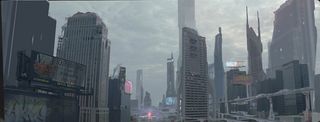
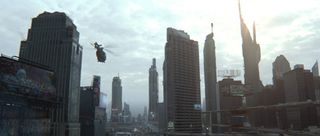
This was your first time in charge of the FX on a low budget movie. Was it more or less fun to work on than a blockbuster?
“It was a fun shoot. The thing that was cool about Ryan was that he knew exactly what he wanted. So what was really nice about that, even thought he was new to visual effects, I would have him come in every day to look at the shots, and he didn’t waiver and go round and round in circles. We’d show him a concept from Atomic Fiction and he’d go, ‘Yeah, I like this part, I don’t like this part, I’d rather see X,’ you know. And he was like that on set, you know. He knew exactly what he wanted to shoot. He didn’t shoot a million iterations ’cos he knew what he wanted. So it was really, it was very nice working with somebody who wasn’t flip-flopping all over the place.”
So how quickly did you convince him not to mistrust FX?
“Not until post. So there were many times when shooting when we were like… for instance when we’re on the highway confrontation between Seth and Joe and you know, there’s the big dust cloud that he shoots up. I was saying, ‘Don’t even waste your time shooting it practical ’cos there’s not going to be continuity amongst shots if there’s wind. But he wasn’t comfortable with that. So we shot it practically with the dust on set, and then also shot a clean plate without dust, and then – of course – we used the clean plate and did the effect digitally. I say ‘of course’ but it’s just, you know… it’s very difficult to control those kinds of things.”
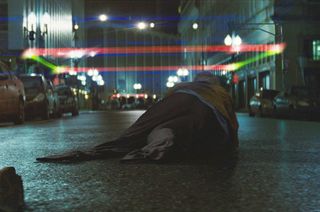
What was the single biggest challenge on this film?
“Well the most difficult shot is the shot when the old guy crashes into the telephone pole and gets out of the car and then his legs disappear because that was a really tough shot and after talking with Hydraulx and going back and forth we decided that we had to digitally replace him from the waist down. So he was all CG from the waist down once he got out of the car. And I remember the look on Ryan’s face when I told him that that’s what we’re going to do – it was just like a look of horror. And I was like, ‘Don’t worry, it’s Hydraulx, it’s going to be good.’ I don’t think anyone would ever know that we did that digitally.”
“It came out really well. I mean, I’m always nervous when we’re doing city extensions and future stuff because so much of that stuff looks like really bad video games when you go to the theatre, but again we got lucky because Ryan very early nailed the concepts which gave us a lot of time to really beat it into looking photo-real. And the Atomic guys were just as interested as we were as making it look so people couldn’t tell what we had added or removed. But those can be horribly troublesome shots, I mean, you look at some movies and you’re just taken right out of the movie by bad map paintings.
Is there anything that was planned that at the end of the day just didn’t happen for time or resources reasons?
“No, actually on this one. I mean, we got Ryan everything he wanted, I didn’t walk away feeling like, ‘Ugh I hate that shot,’ and neither did he, and a lot of times you do. It happens, you run out of time and you’re stuck with some real clunkers. No, on this one we were both really happy with the end result. It’s basically everything we asked for from the vendors and everybody was able to deliver. I mean it was just a fun show to work on and everybody was totally collaborative and into it.”
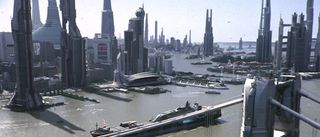
It sometimes feels that you all get better work out of people if they actually love the film that they’re working on. That seems to be what happened here.
“Yeah totally. I mean the interest was working with Ryan Johnson, and of course Joseph Gordon-Levitt’s a big draw. I mean I’m working with him now on his directorial debut – Don Jon’s Addiction – that he’s starring in and doing and he’s just awesome to work with. I’ve got a lot of the same people from Looper , even though I was telling them, ‘Guys, this one has even less money!’ everybody jumped in and said, ‘Hey, you know, Joseph Gordon-Levitt’s directing a movie, that’s totally cool!’
“So it’s a lot of fun. I mean these are my first indies, and they’re really fun. I mean with Looper , in post we had an assistant editor, me, a producer and a co-ordinator, and Ryan came in once a day and the producer came in maybe once a week to say hi, see how we were doing. Other than that, we felt like four college kids. We had the music cranked up, and all day downloading, giving notes and talking to people around the world. I mean it was a blast!”
When you go to see another film you haven’t worked on – a big special effects film – can you switch off or are you analysing the effects all the time?
“No. You know what? If the effects are good I’m not even really paying attention, I’m just watching the movie. But when they’re bad, oh man, it just ruins the show for me. I’m groaning the whole time, I mean, almost getting angry the effects are so bad, you know. And when stuff is really good… like, I remember being blown away by District 9 and I really thought they deserved to win the Oscar that year. I mean Avatar was amazing and it’s too bad they were up against an Avatar , but I was watching District 9 and the effects were so good that in some senses I was being distracted because I kept staring at it going, ‘Holy shit that doesn’t look CG at all!’ So it can be hard to separate completely. But like when a movie’s good, I don’t even think about it most of the time. If I went and saw Looper I wouldn’t even think about it. I’d just really enjoy it.”

Dave is a TV and film journalist who specializes in the science fiction and fantasy genres. He's written books about film posters and post-apocalypses, alongside writing for SFX Magazine for many years.
